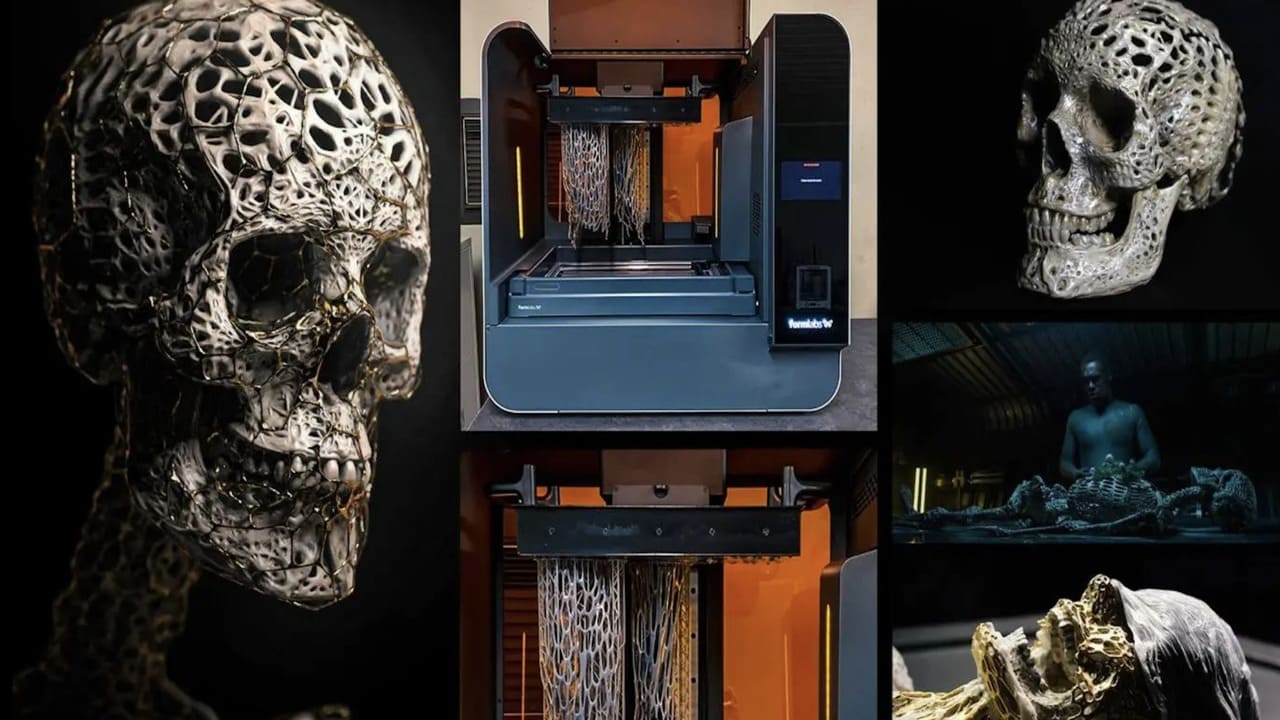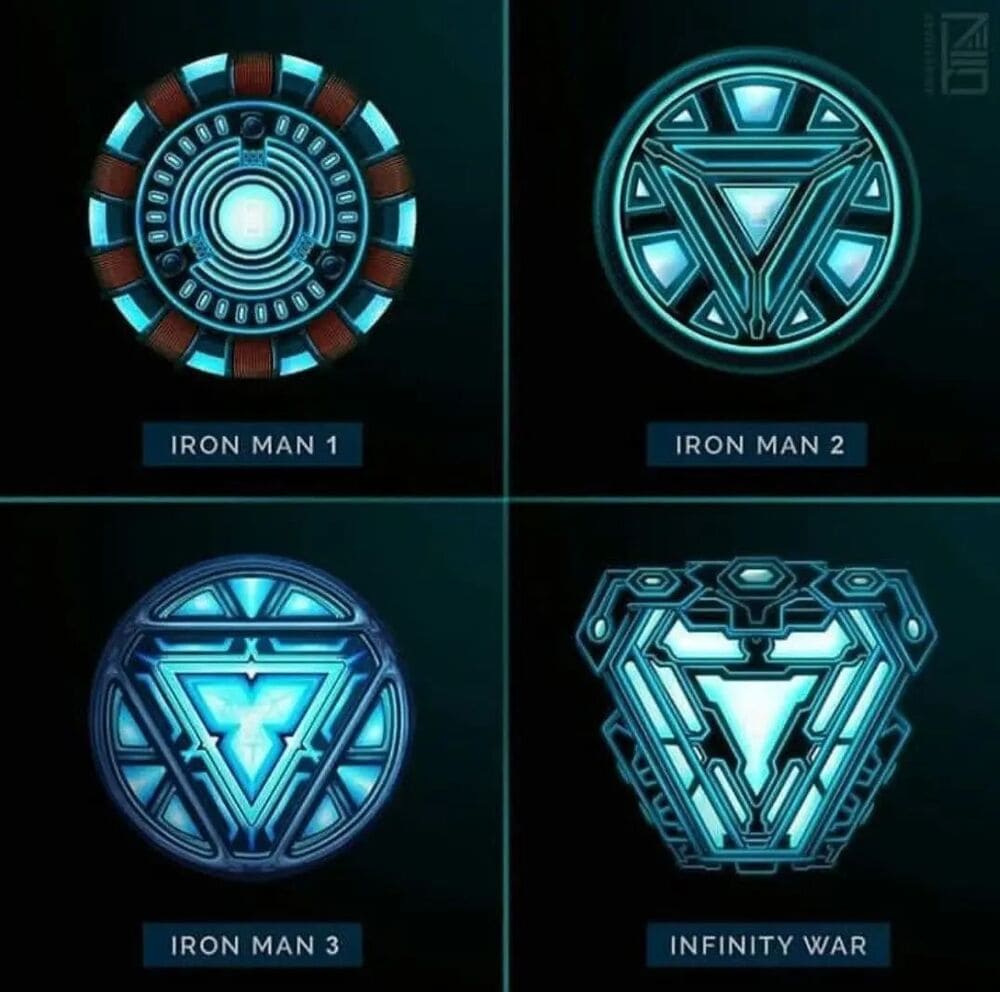The impact of technology Formlabs 3D printers on the entertainment industry, particularly in the creation of props, has been nothing short of remarkable. From blockbuster movies to highly anticipated TV shows, the seamless integration of 3D printing has given birth to fantastic worlds, iconic characters and intricate details. Not only has 3D printing improved the visual quality and realism of props, but it has also simplified production workflows, allowing creative teams to iterate quickly, receive client approval, and ultimately deliver amazing results. From the design phase to the final product, Formlabs has become a useful tool that allows prop makers, visual effects artists, and filmmakers to push the boundaries of reality.
Formlabs 3D printers in the entertainment industry: the wonders of Marvel prop creation
The cinematic universe Marvel used 3D printers on many occasions during the process of creating the props. On average, Russell Bobbitt, Property Master at Marvel Studios, estimates that around 100 props per movie involve 3D printing. The Thor’s new hammerStormbreaker, first seen in Avengers: Infinity War, for example, was 3D printed in 34 different pieces that were then assembled.
Furthermore, Bobbitt mentions theArc Reactor of Tony Stark, which he describes as the most labor-intensive prop he has ever made. Bobbitt and Robert Downey Jr. worked together on the initial design and design, Bobbitt 3D printed it, and together they tested its visual and mechanical performance.
Here the Disney+ promotion at 1.99 euros per month for 3 months expires on September 20th!
3D printing in cinema: how props are created
Formlabs 3D printers in the making of Renfield
Another popular film that benefited from 3D printing during its production is the highly anticipated 2023 comedy-horror film, Renfield. Inspired by Bram Stoker’s 1897 novel Dracula, the film follows Renfield, a lawyer played by Nicholas Hoult, as he attempts to escape the clutches of his boss, the legendary character, the Conte Dracula (played by Nicholas Cage).
To get into character and adopt the macabre appearance that characterizes the well-known vampire, Cage had to undergo three hours of preparation every day. This lengthy process involved the application of prosthetics, makeup, the addition of false hair and, most importantly, the insertion of Dracula’s defining dentures.
The dentures were custom made by a dental technician who scanned Cage’s teeth to design the iconic fangs and then printed them on the printer Formlabs Form 3B+. The custom, lifelike design of the prosthetics gave Cage the ability to speak clearly and fully embody the spirit of Dracula, without the inconvenience of bulky prosthetics.
Formlabs powers the magic of visual effects at Aaron Sims Creative
Aaron Sims Creative is an award-winning visual effects studio that has worked on some of Hollywood and streaming services’ biggest hits, bringing superheroes and monsters to life.
Aaron Sims Creative’s workflow relies heavily on the Formlabs fleet of 3D printers. When working on new projects, the team receives a design brief based on the script and works alongside the director to develop creatures and environments. After developing the first drawings, the team prints the creature and shares their vision with the team.
One of their first projects on the Formlabs printer, was the creation of the Demogorgone di Stranger Things. ASC printed and painted their vision of the Demogorgon to present to the series producers.
From pixels to print: The Mandalorian’s 3D printed Razor Crest
The Mandalorian of Disney+ has captivated audiences around the world with its compelling storytelling and immersive visuals. Combining iconic elements from the original productions with new characters and storylines have made it a highly successful addition to theStar Wars universe.
According to the team at Industrial Light & Magicthe renowned visual effects company founded by George Lucas in 1975, one of the most exciting elements they had the chance to develop for The Mandalorian was the new spaceship, at Razor Crest.
Today’s technology allows many visual effects to be created digitally, but when the production team suggested building a miniature large enough to shoot for the show, Landis Fields, Virtual Production Visualization Supervisor at ILM, offered to 3D print it.
Using the Form 2, Fields printed many different parts that would then be assembled by John Goodson, the model maker, to become the massive machine that is the Razor Crest. A huge team effort was needed and the crew combined old and new motion control techniques to shoot the different scenes, which made the project even more exciting. Ultimately, the crew used quite a few shots of the miniature in the show and it’s quite difficult to distinguish them from the CGI generated shots.
















Leave a Reply
View Comments